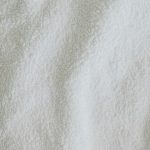Are you curious about the secrets behind soft, absorbent towels? Look no further! In this article, we’ll take you on a journey through the world of towel fibers, exploring the science of absorbency and the factors that contribute to their luxurious softness.
We’ll also delve into the weaving techniques and manufacturing processes that enhance their durability. Whether you prefer natural or synthetic fibers, we’ll help you choose the perfect towel for your needs.
Let’s dive in and uncover the role of soft absorbent fabrics!
Table of Contents
Towel Fibers: Exploring the Building Blocks
In this article, you’ll explore the key role towel fibers play in creating soft and absorbent fabrics. Towel fibers are the building blocks that determine the texture and overall quality of a towel. Understanding the texture, or feel, of different towel fibers is essential to choosing the perfect towel for your needs.
There are several types of fibers commonly used in towels, including cotton, bamboo, and microfiber. Cotton is a popular choice due to its natural softness and absorbency. It’s gentle on the skin and provides a luxurious feel. Bamboo fibers, on the other hand, are known for their antimicrobial properties and eco-friendly nature. They’re incredibly soft and ideal for those with sensitive skin.
Microfiber towels are made of synthetic fibers that are ultra-fine and highly absorbent. They’re known for their quick-drying capabilities and are often used in sports or travel towels. While they may not have the same level of softness as cotton or bamboo, they make up for it with their superior absorbency.
Understanding the different towel fibers allows you to choose a towel that meets your specific needs. Whether you prioritize softness, absorbency, or quick-drying capabilities, there’s a towel fiber out there for you.
The Science of Absorbency: How Towels Soak Up Moisture
To understand how towels efficiently soak up moisture, let’s delve into the science of absorbency and explore the mechanisms behind their water-absorbing capabilities. Here’s what you need to know:
-
Towel thickness: impact on absorption – The thickness of a towel plays a crucial role in its absorbency. Thicker towels have more surface area and can hold a larger amount of water. This is because the gaps between the fibers are larger, allowing for better water retention. So, if you’re looking for a towel with high absorbency, go for a thicker option.
-
Towel drying methods: air vs. sun – When it comes to drying towels, there are two common methods: air drying and sun drying. Air drying involves hanging the towel in a well-ventilated area, allowing it to naturally dry over time. Sun drying, on the other hand, involves exposing the towel to sunlight, which can help kill bacteria and remove any lingering odors. Both methods are effective, but sun drying may provide additional benefits due to the sun’s natural disinfecting properties.
Understanding these factors can help you choose the right towel for your needs and maximize its absorbency. So, whether you opt for a thicker towel or prefer to air dry or sun dry, you can ensure that your towels efficiently soak up moisture every time.
Softness Factors: What Makes a Towel Feel Luxurious
Experience the luxurious feel of a towel through its soft and plush fabric. When it comes to a towel’s softness, there are several factors that contribute to its luxurious texture. One important factor is the thickness of the towel. A thicker towel tends to feel softer and more indulgent against your skin. This is because the extra layers of fabric provide added cushioning and a greater surface area to create a gentle and comforting touch.
Another factor that contributes to a towel’s luxurious texture is the quality of the fabric. Towels made from high-quality materials, such as Egyptian cotton or bamboo, tend to have a softer and smoother feel. These fabrics are known for their superior absorbency and durability, making them ideal for creating a luxurious towel experience.
In addition to thickness and fabric quality, the way a towel is woven also affects its softness. Towels with a tighter weave tend to feel more velvety and plush. This is because a tighter weave creates a denser fabric, which enhances the softness and gives the towel a luxurious texture.
When choosing a towel, it’s important to consider these softness factors to ensure you experience the utmost comfort and luxury. The thickness of the towel, the quality of the fabric, and the tightness of the weave all play a role in creating a towel that feels soft, indulgent, and truly luxurious.
Weaving Techniques: Enhancing Absorbency and Durability
To enhance the absorbency and durability of towels, it’s important to understand various weaving techniques. These techniques play a crucial role in determining the quality and performance of the towels you use. By choosing the right weaving technique and fabric construction, you can ensure that your towels not only absorb moisture effectively but also withstand regular use and washing.
Here are three weaving techniques that enhance absorbency and durability:
-
Terry Weave: This is the most common weaving technique used in towels. It creates loops on the surface of the fabric, increasing its absorbency. The loops trap moisture, allowing the towel to quickly absorb water and dry you off efficiently.
-
Jacquard Weave: This technique uses a loom to create intricate patterns in the fabric. Although it doesn’t directly enhance absorbency, it adds durability by increasing the thickness and weight of the towel. Jacquard-woven towels are known for their luxurious feel and long-lasting quality.
-
Waffle Weave: This unique weaving technique creates a textured pattern that enhances absorbency. The waffle-like indentations increase the surface area of the towel, allowing it to absorb more moisture. Waffle weave towels are lightweight, quick-drying, and highly absorbent.
Understanding these weaving techniques and fabric constructions will help you choose towels that meet your specific needs for absorbency and durability. So, next time you’re shopping for towels, pay attention to the weave and construction to ensure you’re getting the best quality product.
Manufacturing Processes: From Yarn to Finished Product
One crucial step in the manufacturing process of towels is transforming yarn into the finished product. This process involves various manufacturing techniques that aim to achieve high manufacturing efficiency while minimizing the environmental impact.
To better understand the manufacturing processes involved, let’s take a look at the table below:
| Manufacturing Process | Description | Impact on Efficiency | Environmental Impact |
|---|---|---|---|
| Spinning | Yarn creation by twisting fibers together | High efficiency as it can be automated | Moderate impact due to energy consumption |
| Weaving | Interlacing the yarns to form the towel fabric | Moderate efficiency as it requires precision | Low impact as it uses minimal additional materials |
| Cutting and Sewing | Trimming the fabric and sewing it into towel shape | Moderate efficiency with skilled labor | Low impact as it generates minimal waste |
Manufacturing efficiency is crucial to ensure that towels are produced in a cost-effective and timely manner. By utilizing automated processes like spinning, manufacturers can produce yarns quickly and efficiently. However, such processes may have a moderate environmental impact due to the energy consumption involved.
On the other hand, weaving requires precision and skilled labor, making it moderately efficient. However, its environmental impact is relatively low as it utilizes minimal additional materials.
Lastly, the cutting and sewing processes require skilled labor, resulting in moderate efficiency. Nevertheless, the environmental impact remains low as these processes generate minimal waste.
Natural Vs. Synthetic Fibers: Pros and Cons
When it comes to choosing the fabric for your towels, it’s important to consider the advantages and disadvantages of natural fibers and synthetic fibers. Here are three key points to help you make an informed decision:
-
Natural fibers:
- Natural fibers, such as cotton and bamboo, have been used for centuries in the production of towels.
- They offer several benefits, including breathability, softness, and absorbency.
- Cotton towels, in particular, are known for their ability to quickly absorb moisture, making them ideal for drying off after a shower or bath.
- Additionally, natural fibers are often hypoallergenic, making them a great choice for individuals with sensitive skin.
-
Synthetic fibers:
- On the other hand, synthetic fibers like polyester and microfiber have gained popularity in recent years.
- These fibers are known for their durability, as they’re resistant to wear and tear.
- Synthetic towels also tend to dry quickly, making them a convenient option for busy individuals.
- However, one disadvantage of synthetic fibers is that they may not be as soft or absorbent as natural fibers.
-
Finding the right balance:
- Ultimately, the choice between natural and synthetic fibers depends on your personal preferences and needs.
- Natural fibers offer a luxurious feel and excellent absorbency, while synthetic fibers offer durability and quick drying properties.
- Consider what matters most to you in a towel and choose a fabric that meets those requirements.
Choosing the Perfect Towel: Factors to Consider
When choosing the perfect towel, consider the factors that will best meet your needs and preferences.
One important factor to consider is the thickness of the towel. Towels come in various thicknesses, ranging from thin and lightweight to thick and plush. Thicker towels are generally more absorbent and provide a luxurious feel, while thinner towels dry faster and are easier to pack for travel. Think about how you’ll be using the towel and choose the thickness that suits your needs best.
Another factor to consider is the color options available. Towels come in a wide range of colors, allowing you to choose one that matches your personal style and complements your bathroom decor. Some people prefer neutral colors like white or beige, while others prefer vibrant colors or patterns to add a pop of color to their space. Consider the ambiance you want to create in your bathroom and choose a color that aligns with your vision.
Frequently Asked Questions
How Often Should I Replace My Towels?
You should replace your towels every 1-3 years. To extend their lifespan, wash them in cold water, use less detergent, and avoid using fabric softeners. Hang them to dry instead of using a dryer.
Can I Use Fabric Softener on Towels?
You can use fabric softener on towels, but there are pros and cons. It can make them softer, but also less absorbent. Alternatively, you can try other methods like vinegar or baking soda.
What Is the Best Way to Remove Stains From Towels?
To remove stubborn stains from towels, try these effective towel stain removal techniques. First, pretreat the stain with a stain remover. Then, wash the towel in hot water with a detergent. Finally, air dry or tumble dry on low heat.
Can Towels Be Recycled?
Yes, towels can be recycled! Recycling and upcycling are sustainable options that help reduce the environmental impact of towel manufacturing and disposal. So, don’t throw them away, give them a second life!
Are There Any Alternative Uses for Old Towels?
You can upcycle old towels into creative DIY projects by repurposing them. There are many alternative uses for old towels, such as making bath mats, cleaning rags, or even sewing them into reusable shopping bags.
- Is Chanderi Silk Pure Silk? The Definitive Answer - June 25, 2025
- What Is Chanderi Silk? a Complete Guide to Its History, Weave, and Feel - June 25, 2025
- Chanderi Fabric: The Ultimate Guide to India’s Sheer Luxury - June 25, 2025



